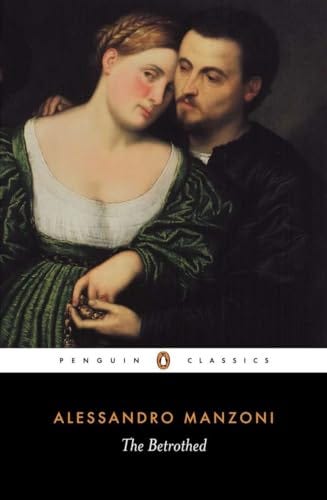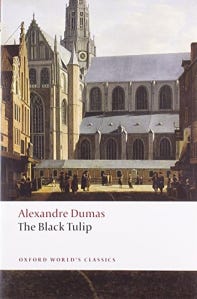In February, I fell in love with classics again. But not just any classics. I’m talking about ones written in the 19th century that are classified as historical fiction at the time of writing.
So, this means that the books I read were written in the 1800s but set well before then.
The historical novel society classes historical fiction as:
To be deemed historical (in our sense), a novel must have been written at least fifty years after the events described. Or written by someone who was not alive at the time of those events, and therefore approaches them only by research.
We also consider the following styles of novel to be historical fiction for our purposes:
alternate histories, such as Robert Harris’ Fatherland
pseudo-histories, in the style of Umberto Eco’s Island of the Day Before
time-slip novels, such as Barbara Erskine’s Lady of Hay
historical fantasies, such as Bernard Cornwell’s King Arthur trilogy
multiple-time novels, for example Michael Cunningham’s The Hours
1. The Black Tulip
Written by Alexandre Dumas and published in 1850, this was a wild read.
Set in 1672 Holland, The Black Tulip combines two real historical events. One is the tulip craze that saw the price of tulip bulbs driven to exponential prices and then crash. The other is the story of the De Witte brothers. Spoiler alert, they were very brutally murdered by an angry mob. Amidst these two events, Dumas weaves a romantic story of two lovers, some rare black tulips and a villain intent on claiming them for himself.
Aside from the fascinating history of this book that features William of Orange, the story is riveting. It reads as a cinematic experience. There’s romance, imprisonment, violence (quite shocking at times), nemeses, revenge, and themes of justice and freedom. It has everything that an exciting read should have. Dumas himself was a colourful character, and this is very much reflected.
This is the first time I’ve read Dumas, and I got on with his readable and gripping style. His language is simple, his plot pacy and it’s easy to binge this. It’s a short read at 234 pages but easily demolished, as in my case, in a few sittings.
This story doesn’t have the finesse and grace you expect to see from classics. This has earned it the reputation of being a bit ‘sugary a confection’. But it’s so entertaining, gripping and exciting, that it’s earned its place as a staple in my eyes.
2. The White Company by Arthur Conan Doyle
A riveting, exciting, and robust medieval adventure set during The 100 Years War.
Recommended me to by my pater, this one was a gem that I hadn’t heard of before. It is also said to be Conan Doyle’s favourite of the books he wrote.
Set during the 100 Years War, a young man, Alleyne, leaves the safety of a monastery and heads into the world. He soon falls in with a band of archers known as The White Company, headed to France.
Conan Doyle creates a vivid medieval world, bursting with colorful descriptions of medieval culture, life, clothing and the chivalric code of knights. He moves between atmospheric descriptions of rural England, a ravaged France, and the treacherous battlefields between France and Spain. His setting is reminiscent of Ivanhoe, sparing no detail and creating a romanticized but authentic medieval world.
The characters bring it to life, revealing a swath of medieval society. Chaucer’s influence is seen in some of the characters Alleyne meets, from arguing scholars, to beautiful damsels and glorious knights.
Conan Doyle embraces the medieval language, showing the etymology and language changes that came over with the Normans. His characters speak in the tongue of the time. ‘Hath’ and ‘thine’ are common occurrences, making the dialect unfamiliar. But it’s soon forgotten as you’re swept up into the story.
3. The Betrothed by Alessandro Manzoni
Considered one of the greatest Italian novels, this is a story of plague, passion and politics.
Set during the Spanish occupation of Lombardy in the 1620s, the Betrothed is about two young lovers, Renzo and Lucia, whose marriage is thwarted by the local lord who wants Lucia for himself. They’re forced to flee and separate, facing plague, famine and imprisonment.
I was drawn to this one for its historical setting. It takes place in Lombardy, Northern Italy during the 17th century. Throughout the narrative, a plethora of historical events feature, highlighting the social and political situation of the time. From bravi (hired thugs), riots in Milan over bread and the plague and famine that decimated the population, Manzoni draws on key events of the 1600s.
This story has a very entertaining and at times, melodramatic plot. There’s kidnappings, evil lords, two thwarted lovers and catastrophic economic events. The age-old question hangs throughout – will the two lovers ever be reunited?
Manzoni frames his story as a retelling of an earlier text, crafting it for his audience. At times, the narrator breaks the fourth wall to give a modern perspective of the events described in the novel. I’m not sure if this is something I always enjoy, as it breaks the reader away from the text. But in this case, it provides an interesting structural feature and leads to deep, detailed discussions.
These discussions around religion, culture and morality can feel heavy within the novel setting. The book is hefty at 720 pages, so at times, these interludes can make the novel feel longer.
But overall I enjoyed this novel with its entertaining story set against fascinating historical events and its unique voice.
Of these three, my favourite had to be The Black Tulip. It was an exciting, dramatic and energetic read that was hard to put down. The historical setting was also something new for me to discover.









